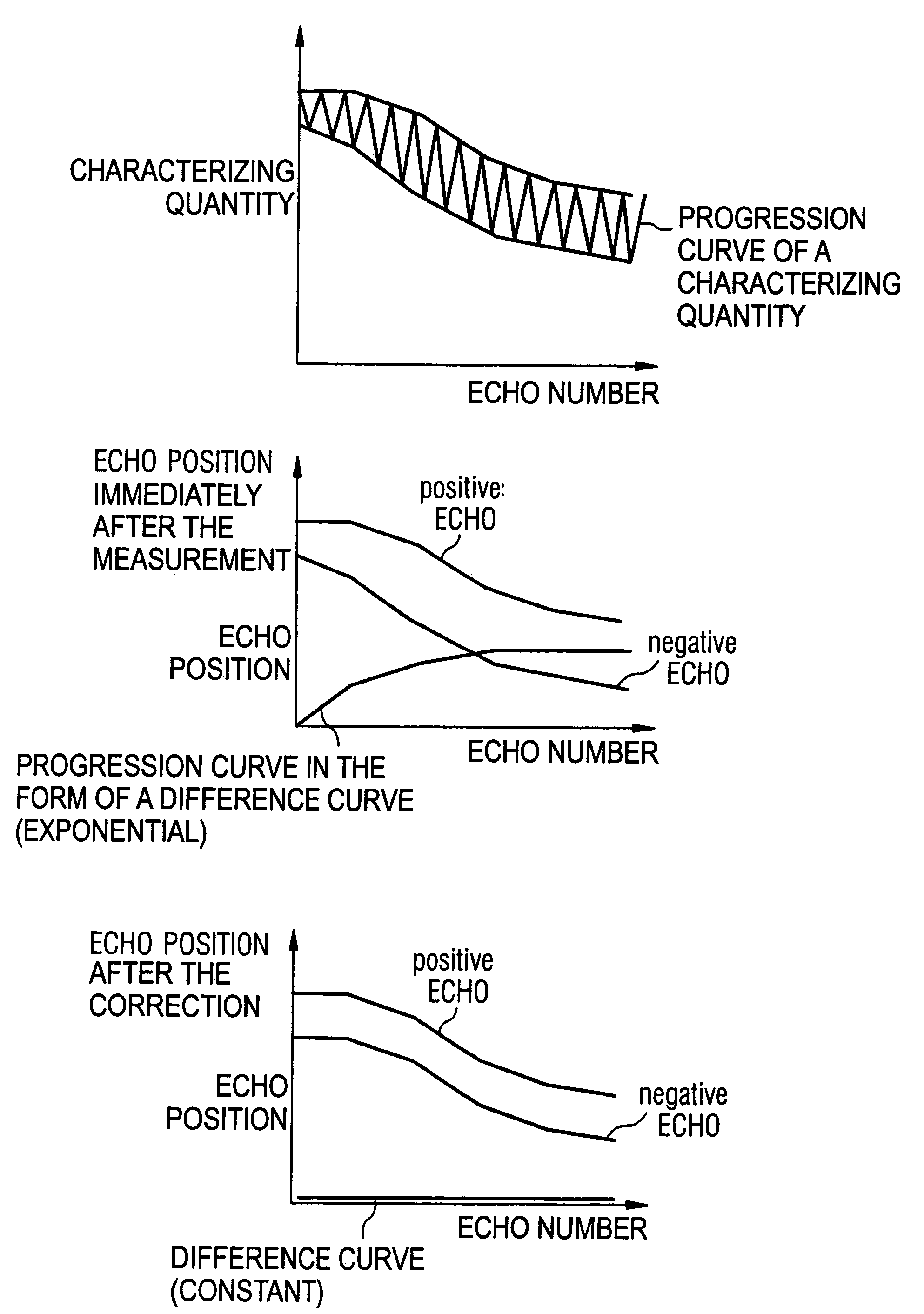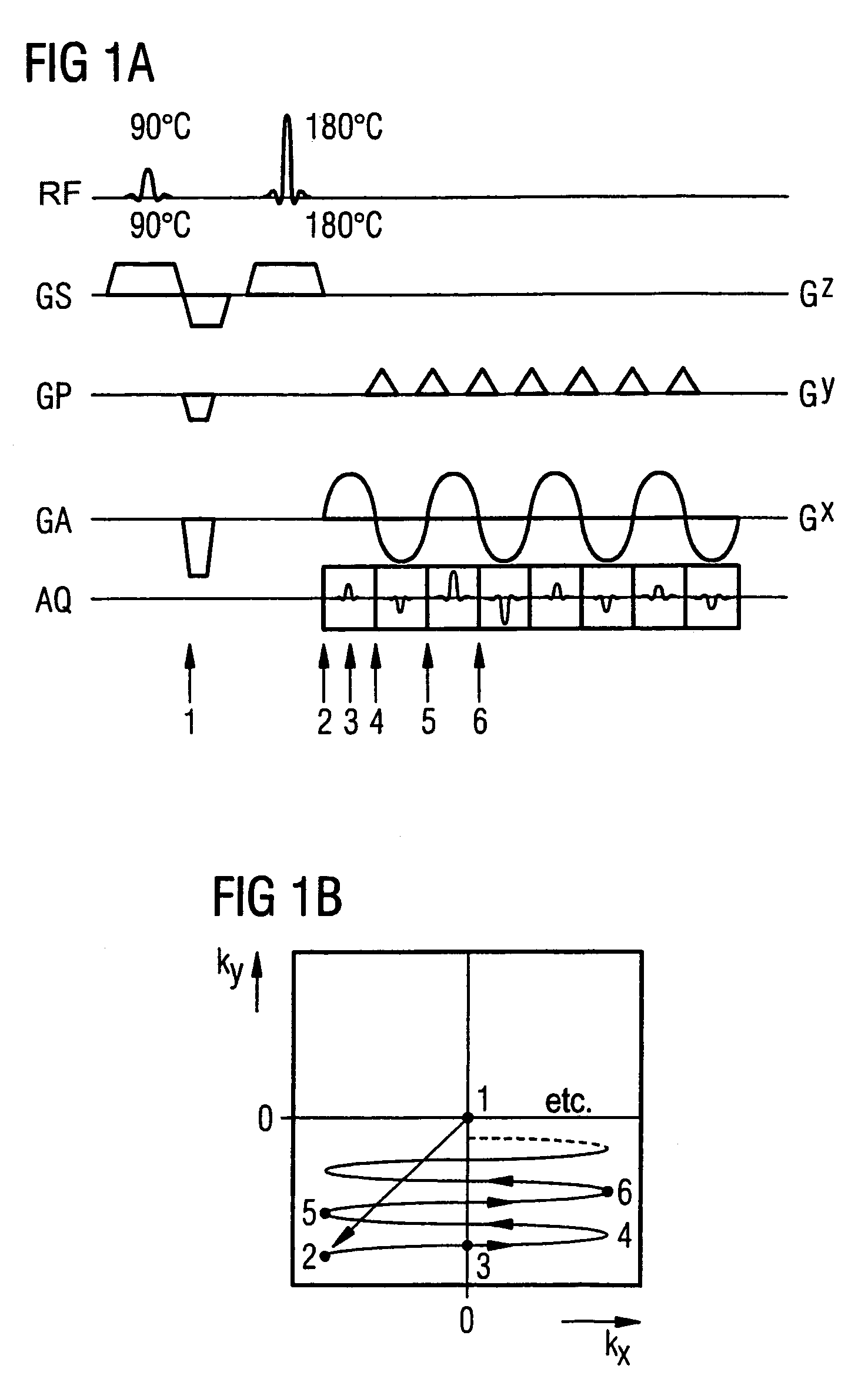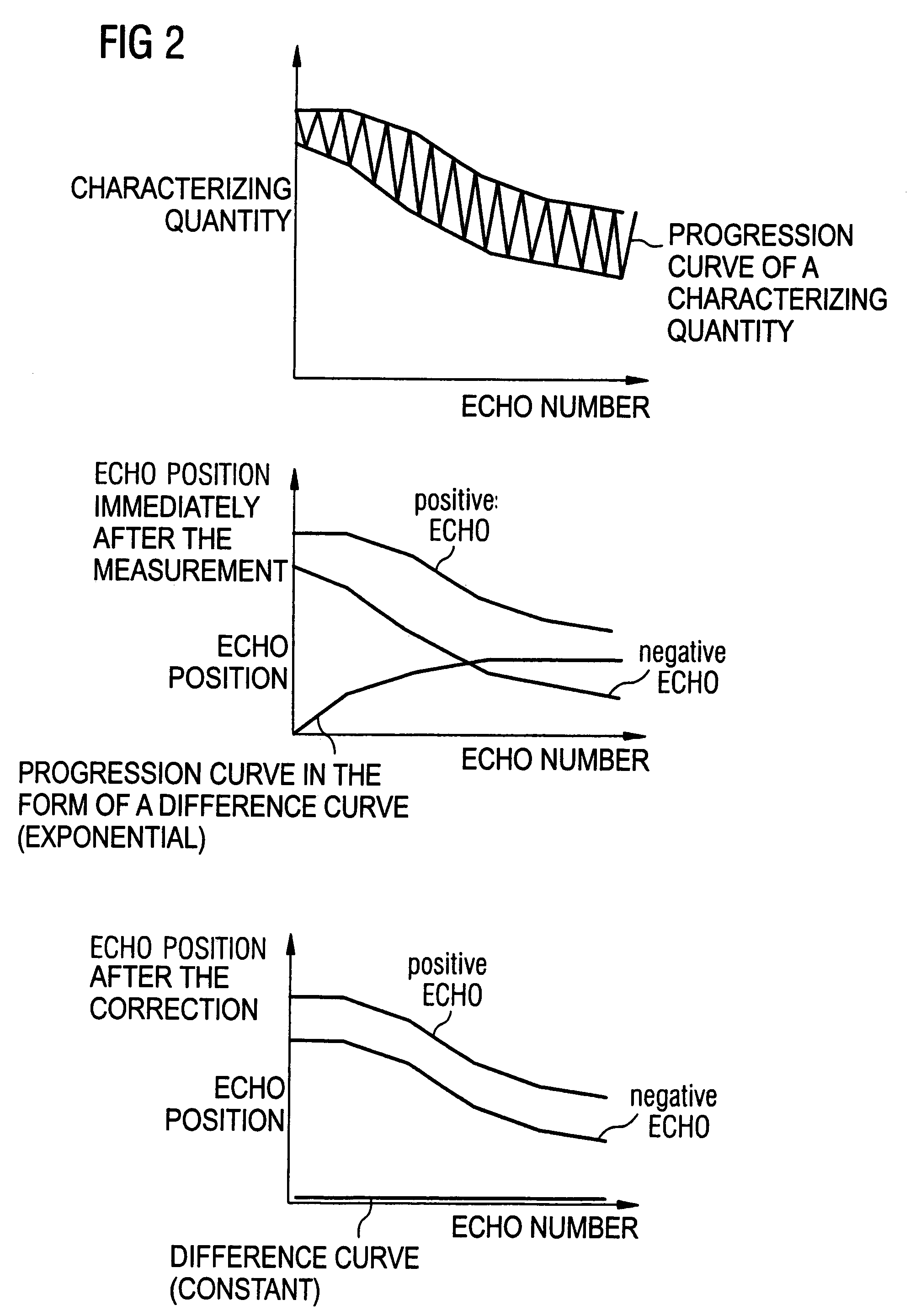Method and apparatus for reduction of nyquist ghosts in medical magnetic resonance imaging
a technology of magnetic resonance imaging and nyquist ghosts, applied in the field of magnetic resonance tomography, can solve the problems of incomplete additional exposure, inability to react dynamically to asymmetry changes that occur during the acquisition series, and more difficult image assessment or image interpretation in the framework of a diagnosis. the effect of epi sequence phase correction
- Summary
- Abstract
- Description
- Claims
- Application Information
AI Technical Summary
Benefits of technology
Problems solved by technology
Method used
Image
Examples
Embodiment Construction
[0046]The characteristic feature of EPI imaging is the alternating readout gradient pulse train given the data acquisition (FIG. 1A) with which all lines of the k-space matrix are successively acquired in a non-segmented acquisition method (segmented methods and three-dimensional EPI acquisition methods are not considered in the following, but the inventive method can be transferred thereto without further measures). Adjacent lines are thus acquired under inverted gradient amplitudes and must be rectified before the Fourier transformation in order to acquire a correct image data set. The rectification considered is thus not considered as the acquired signal itself.
[0047]For abbreviation in the following discussion, the terms “positive echo” and “negative echo” are used for such data sets that are readout with positive and negative readout gradient pulses, respectively, independent of the actual algebraic sign of the k-space coordinates (other typical designations are, for example, “...
PUM
 Login to View More
Login to View More Abstract
Description
Claims
Application Information
 Login to View More
Login to View More - R&D
- Intellectual Property
- Life Sciences
- Materials
- Tech Scout
- Unparalleled Data Quality
- Higher Quality Content
- 60% Fewer Hallucinations
Browse by: Latest US Patents, China's latest patents, Technical Efficacy Thesaurus, Application Domain, Technology Topic, Popular Technical Reports.
© 2025 PatSnap. All rights reserved.Legal|Privacy policy|Modern Slavery Act Transparency Statement|Sitemap|About US| Contact US: help@patsnap.com



